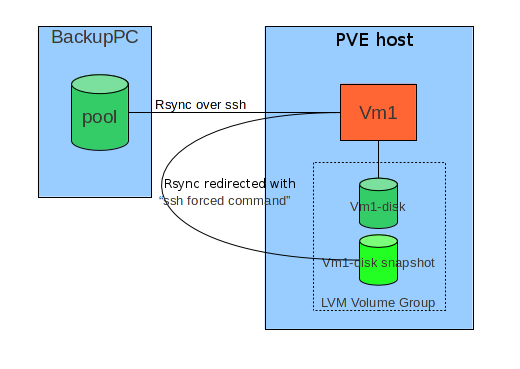File System level backups with LVM snapshots: Difference between revisions
Jump to navigation
Jump to search
No edit summary |
|||
| Line 15: | Line 15: | ||
# Revert machine to normal operating state. | # Revert machine to normal operating state. | ||
# Redirects original rsync command towards PVE hosts and the snapshot. | # Redirects original rsync command towards PVE hosts and the snapshot. | ||
#* Redirected rsync runs on PVE. | #* Redirected rsync runs on PVE: mount fs, optionally save MBR and PBS, save ntfs metadata for Windows hosts, run rsync. | ||
# Triggers snapshot snapshot removal on PVE. | # Triggers snapshot snapshot removal on PVE. | ||
Revision as of 12:22, 10 September 2012
Introduction
The general idea consists in combining an external tool wich is able to do filesystem level incremental backups ( rsync by means of BackupPC in this document) with the possibility to take snapshots of LVM based storage of virtual machines.
Fundamental constraints in this solution are:
- Do not change fundamentally the configuration of an host under BackuPC
- Preserve easy interactive restore directly on the host.
Basically the target host, when a backup is required via ssh connection, instead of directly executing the rsync command, intercepts it and runs a script ("forced command") which:
- Prepares backup operations (for instance, saving ACL in case of Windows host)
- Stops or Suspends services which can do important changes on filesystem.
- Triggers a snapshot of his own storage on PVE host it is runnng on.
- Revert machine to normal operating state.
- Redirects original rsync command towards PVE hosts and the snapshot.
- Redirected rsync runs on PVE: mount fs, optionally save MBR and PBS, save ntfs metadata for Windows hosts, run rsync.
- Triggers snapshot snapshot removal on PVE.
During interactive restore, instead, rsync process runs directly on the host.
